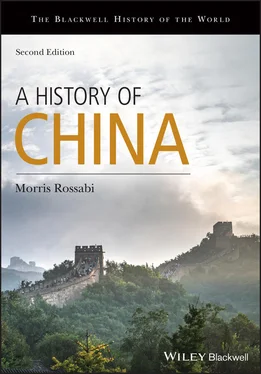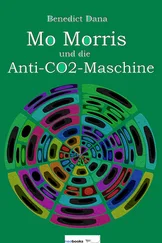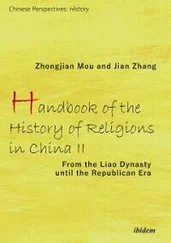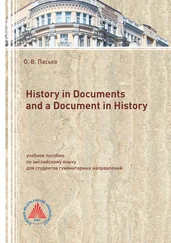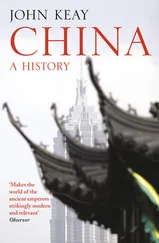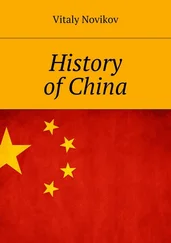The scenario described above characterized many periods in Chinese history. Stiff taxes, heavy corvée demands, encroachments by landlords, and high, burdensome rates of interest charged by moneylenders harmed many peasants, compelling some to sell or entrust their land to landlords, who had managed to achieve a tax-free status. The recurrence of such patterns has given rise to the concept of dynastic cycles – that is, each dynasty went through a regular ebb and flow, with the same factors as in preceding dynasties leading to its rise and eventual collapse. However, though certain patterns seem to be similar, scholars now question the idea of a “dynastic cycle” because there were just as many, if not more, differences contributing to the growth and decline of individual dynasties.
Another paradox was that agronomy and trade actually developed during this period of warfare. Better irrigation systems and new farming techniques led to greater food production. The conflicts prompted the construction and repair of roads, which naturally facilitated trade. The individual states gained control of more territory, with the result that, when peace prevailed, merchants could travel unhindered in a larger expanse. As contacts with other states increased, demands for new or previously unknown products developed, and merchants sought to fill these demands. Bronze money appeared and facilitated commerce. Money in the shapes of knives and spades came into wider circulation, particularly in the cities, which proliferated and now became more populated and more market-oriented. Merchants could aspire to higher social positions because social status was not as fixed as it had been in the Western Zhou dynasty. Using their newly won gains, they could buy land or a government office, easing their way into the elite.
Commerce fostered exchanges of all sorts and led to the introduction of new products and new technologies, not to mention new ideas. Even before the Eastern Zhou, developments in areas to the west influenced China. For example, the chariot probably entered into China from modern Kazakhstan, where it likely originated as early as 2000 BCE. The ox-drawn plow, which was invented in west Asia, appeared during the Eastern Zhou. Central Asia, where many animals had been domesticated, was in touch with China, judging from the introduction of camels and donkeys toward the end of the Zhou. Along with the horse, the arrival of these two beasts of burden marked an important economic advance because they facilitated transport and commerce.
Economic vibrancy also culminated in domestic innovations and inventions. Iron started to be substituted for bronze (but did not entirely supplant it). Agricultural implements such as shovels, plowshares, sickles, hoes, and rakes were the most common tools, and the use of iron plows permitted greater efficiency in farming, enabling peasants to work previously uncultivable land. The use of oxen as draft animals allowed peasants to farm larger plots of land. Hammers, chisels, axes, knives, and other iron tools were also plentiful, as were items of daily usage such as cups, nails, and belt buckles. Unlike bronze, iron was not generally used for the production of ritual and ceremonial vessels. Bronzes continued to be produced in large quantities and with some new features. More elaborate designs, including new motifs of intertwined dragons or snakes, characterized some of the bronzes. The Eastern Zhou rulers also lavished more attention on bronze weapons because of the unstable and strifetorn conditions, and bronze mirrors appeared in larger numbers than in the past, particularly in the state of Chu. Distinctive lacquered objects, including drums, cups, and boxes, have been found in Chu tombs. Musical instruments, utilitarian vessels for food and drink, and mortuary objects, all made of lacquer, have been excavated and were highly valued, as evidenced by their positions in tombs. Gold and silver bowls and jade ornaments revealed a high level of craftsmanship, and their placement in graves indicates the great value accorded to these objects. All of these luxury goods, in addition, attest to the existence of a prosperous elite that could afford them.
HUNDRED SCHOOLS OF THOUGHT
Perhaps even more significant for Chinese civilization was a profusion of new ideas and philosophies that generated the so-called Hundred Schools of Thought, an outburst that coincided with a philosophical flowering in many of the great civilizations of the era. The development of new and vastly influential philosophies in Eurasia during this time is astonishing. In the sixth century BCE, Zoroastrianism developed in Iran, Shakyamuni described the path to Buddhist Nirvana, and (at approximately the same time) Isaiah and Jeremiah prophesied mostly manifold disasters; in the fifth century, Socrates took part in the dialogues that gradually but inexorably revealed his metaphysical and epistemological views; and, from the sixth to the fourth centuries, Chinese philosophy flourished. Pervasive theories about direct links between these intellectual developments have proliferated, resulting in unverifiable and occasionally absurd speculations. According to such often ill-informed hypotheses, Daoism was an east Asian version of Buddhism, and the Buddha was actually Lao Zi, the alleged founder of Daoism, who moved to India after completing his mission in China. A chance overlapping in chronology led to such unsubstantiated and incredible assertions. It is true that comparisons between the various philosophies and religions that originated at this time may prove instructive, but direct links and influences are more difficult to establish.
To be sure, the philosophers and religious thinkers of this era shared some of the same concerns. Both Socrates and Confucius sought to identify the nature of a just society in which each individual recognized his or her position in the social hierarchy and performed the tasks required of that status. The two thinkers also offered visions of the ideal man – an individual of high moral probity for Confucius and a philosopher of superior intellectual abilities and ethical astuteness for Socrates; each emphasized education. They resembled each other even in the style they used to present their views, as each shunned a direct, explicit account of his beliefs. Instead they tantalized their listeners with dialogues or anecdotes from which their philosophies could be gleaned. Similarly, Lao Zi and Siddhartha Gautama, the historical Buddha, both described roads to spiritual enlightenment, an objective they shared, though they differed on the paths they advocated. Each disparaged the rewards of this world as ephemeral, and Buddhism, in particular, perceived human life as engulfed in suffering.
The convergence of some themes in the philosophies and religions of that time does not imply a direct relationship between them. It would have been highly unlikely for Chinese philosophers of this era, for example, to have had knowledge of Buddhism. Comforting and satisfying as it may be to conceive of and actually attest to a link and to mutual influences between these philosophies and religions from different Asian civilizations, there is absolutely no evidence for such inferences.
In addition, the Chinese philosophers of this era were responding to the specific social circumstances of Eastern Zhou China. The turmoil of the Warring States period had overturned not only the social system but also societal values. Turbulence had also caused destruction and death. Under these circumstances, the populace needed solace as well as a new moral code and social system. Thus, philosophies that provided comfort or that offered the prospect of social stability and harmony were likely to find a receptive audience. Two philosophical strains emerged to fill China’s needs. One (i.e. Daoism) sought to comfort a population beset by warfare, roving bands of brigands, and generally chaotic conditions while the other (i.e. Confucianism) presented plans for an orderly society.
Читать дальше
